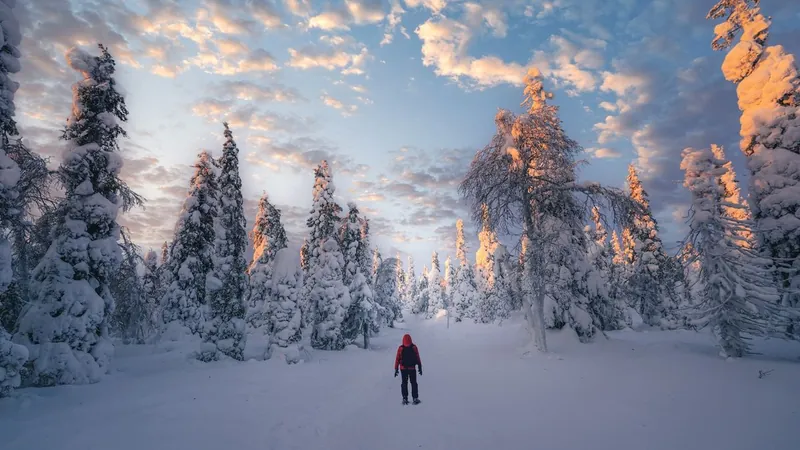
Why the Coldest Days of Winter Come After the Longest Night: The Science Unveiled!
2024-11-18
Author: Sarah
Introduction
The winter solstice marks the darkest time of the year in the Northern Hemisphere, characterized by the shortest day and the longest night. Occurring around December 21, 22, or 23, this day symbolizes the peak of winter darkness. However, surprisingly, the coldest temperatures of the year do not coincide with the solstice but arrive approximately a month later in mid-January. What explains this curious phenomenon?
The Earth's Tilt and Heat Retention
The answer lies in the tilt of the Earth and its ability to retain heat. Earth's axis, the imaginary line connecting the North and South Poles, is tilted at an angle of approximately 23.4 degrees. During the winter solstice, the North Pole points farthest away from the sun, resulting in minimal exposure to sunlight and the shortest amount of daylight. One might think that this would result in the coldest day of the year, but this is not the case.
Seasonal Lag
As Christopher Baird, an associate professor of physics at West Texas A&M University, notes, the coldest temperatures are typically offset from the winter solstice by about a month. This phenomenon, called "seasonal lag," occurs because it takes time for Earth's surfaces—such as lakes, oceans, and ground—to adjust to changes in temperature.
When winter arrives, these surfaces retain warmth from the previous fall and summer, causing the air temperature to decrease more slowly. Nick Bassill, director of the State Weather Risk Communications Center at the University at Albany, affirms that in locations like the Northern Hemisphere, mid-January usually records the lowest temperatures, while the Southern Hemisphere experiences similar delays after its winter solstice in June.
Impact of Coastal Regions
Interestingly, this effect can be more pronounced in coastal regions. Water has a high specific heat capacity, meaning it requires four times as much energy to increase its temperature compared to land. As a result, coastal areas experience more moderated temperatures because the ocean gradually releases stored heat, keeping those regions warmer during the cold winter months. For example, places along the Pacific Coast of the United States often see their coldest temperatures at a later time compared to areas further inland.
Summer Dynamics
The correlation can also be seen during the summer. The longest day of the year, occurring around the summer solstice on June 20, 21, or 22, is not always the hottest. Just as winter carries its own delay, summer weather tends to reach peak warmth in late July or August, with regions like the Mojave Desert and the Gulf Coast of Florida particularly experiencing these shifts.
Conclusion
The interplay of Earth's axial tilt, heat retention of large land and water masses, and the delayed response of physical materials to temperature changes combine to create a fascinating seasonal dynamic. As we continue to explore the complexities of our planet's climate, understanding these patterns can enrich our appreciation for the intricacies of seasonal weather. So next time you find yourself shivering in the depths of winter, remember: darkness doesn’t always equate to the coldest chill!



 Brasil (PT)
Brasil (PT)
 Canada (EN)
Canada (EN)
 Chile (ES)
Chile (ES)
 España (ES)
España (ES)
 France (FR)
France (FR)
 Hong Kong (EN)
Hong Kong (EN)
 Italia (IT)
Italia (IT)
 日本 (JA)
日本 (JA)
 Magyarország (HU)
Magyarország (HU)
 Norge (NO)
Norge (NO)
 Polska (PL)
Polska (PL)
 Schweiz (DE)
Schweiz (DE)
 Singapore (EN)
Singapore (EN)
 Sverige (SV)
Sverige (SV)
 Suomi (FI)
Suomi (FI)
 Türkiye (TR)
Türkiye (TR)